

DRUG TAG
Lala community grapples with rising drug rate, affects students, calls for action

by JANEL BAGOLBOC
ured by the false promises of escape and relief, students in Lala National High School find themselves trapped in a growing epidemic of drug abuse, where fleeting moments of perceived comfort quickly spiral into dangerous and destructive habits.
With alarming frequency, students have been caught using illegal substances, raising concerns about the future of youth in the community, with the school becoming a focal point of the disturbing trend.
by VIENE PEPITO
“We attributed it to his difficult home situation, not realizing drugs were involved.” ACCORDING TO LALA MPS, OUT OF

Out of 6 reported drug-related cases within the campus, the most notable incident occurred in September 2024, when a Grade 9 student was apprehended for possessing illegal drugs on school grounds, sparking fears among parents, teachers, and local officials.
ONE’S TROUBLING REALITY
One Grade 9 student, Nathan (not his real name), was apprehended for possessing illegal drugs on September 17, 2024, and revealed he had been using drugs since eighth grade.
His home life, deeply affected by his parents’ separation, contributed to his feelings of isolation, making him more susceptible to the lure of drugs as an escape.
Teachers noted a sharp decline in Nathan’s academic performance, alongside increasing tardiness and absenteeism, signs of the underlying issues he was facing.
“His grades dropped, and he started skipping classes,” said his adviser.

Admin plea PNP, calls for action
by ALEXANDREIA BADILLES
To address the increasing cases of student offenses, Lala National High School’s (LNHS) administration has strongly requested the Philippine National Police (PNP) for help.
LNHS Head teacher Joyce Villondo has requested increased police visibility to deter students from engaging in miscellaneous transactions near the campus.
“Especially during classes hours nga naay mga students nga mag suroy-suroy outside sa campus, I suspect naa jud mga illegal activities or business,” Villondo stated Villondo mentioned that there are stores near the school that sell cigarettes
to students, despite being prohibited within 50 meters of the campus, and noted the presence of internet cafes that encourage students to skip classes.
“Bag-o ra mi nag implement sa policy nga if late ma-abot ang student is mag require ug admission slip from the guidance office, dili sila pa-sudlon ug classroom if dili to ma present sa teacher,” she highlighted that the school has strengthened its policies to discipline students’ behavior.


Arvin Paradero with Head Teacher Joyce Villondo in discussion regarding the increasing student disturbances.
KOLAMBUGAN, Lanao del NorteVendors and porters at Mukas Port have lost income due to the opening of the Panguil Bay Bridge (PBB) amid promising opportunities for transportation and trade.
Cutting substantially the travel time between Lanao del Norte and Misamis Occidental, the bridge has offered significant help to travelers, however, Mukas Port Vendors have experienced a drop in profit.
Due to student vehicle accidents,
Mukas vendors sees decline in sales amid PBB launch Admin to conduct safety driving orientation
by BETTINA ESPINELI
Lala National High School’s (LNHS) administration has proposed to conduct a safety driving orientation for the senior high school students following the consecutive involvement in vehicle accidents.
In an incident involving three Grade 12 students— Kim Pacaña, Danica Gerenia, and Jacken Catadmana—who were riding a motorcycle without a driver’s license, all sustained minor injuries.
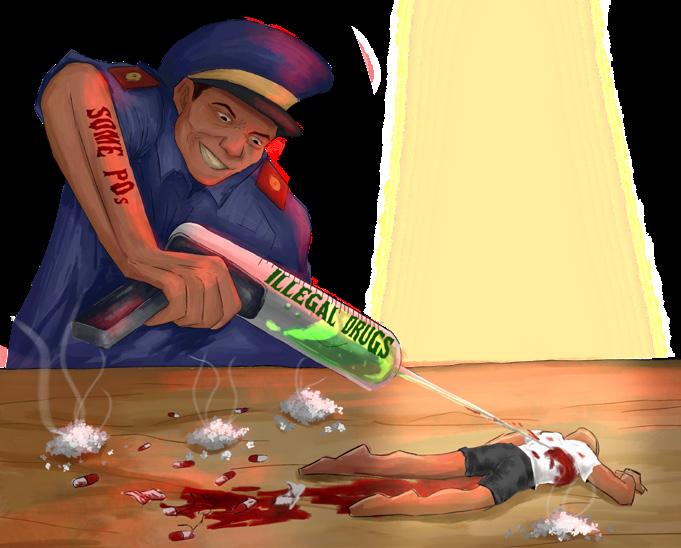

To mitigate
School
rising school
issues,
guidance amends student handbook
by BETTINA ESPINELI
Due to the rising cases of student offenses, Lala National High School’s guidance office has revised the student handbook, which serves as a basis for imposing sanctions on student violations.
An incidental report conducted by The Bounty publication revealed that 29.2 percent of the student misconduct cases involved smoking, another 29.2 percent involved cutting classes, and 25 percent were linked to participation in illegal organizations or gangs, among other offenses.
The growing number of gang-related incidents has added further concern, with some fights even happening during class hours.
A recent incident involved a Grade 11 student, alias Mark, who reported a brawl that broke out at the back of the school, with at least ten individuals, suspected to be affiliated with rival gangs, causing panic among students.
“I was just walking with my friend when suddenly, people started hitting each other, so we all ran as fast as we could because we didn’t know if they had weapons. It was terrifying,” said Mark. Furthermore, guidance office has learned from various students that such altercations have been happening more frequently in different areas of the school, including corridors, the gym, and even outside the campus gates.
Many students, including Alyssa Sienes, a Grade 12 student, expressed their unease about these gang-related riots, with some now afraid to come to school.
“It’s hard to focus on my studies when I’m constantly worried about my safety,” said Sienes.
The school administration has since coordinated with local government agencies, such as the Department of Social Welfare and Development (DSWD) and the Philippine National Police (PNP), to address the escalating situation.
“Our school has updated the student

handbook, which has been approved by the administration,” Delos Santos stated, adding that it will now be used as a reference for determining consequences for misconduct.
He added that offenses have been categorized based on severity, with corresponding consequences for both minor and major offenses.
“The students were handed over to the DSWD, and the illegal drugs were surrendered to the authorities. They will receive weekly visits from the police every Friday and are currently suspended from school for 10 days,” Delos Santos explained.
With this revision, the guidance office aims to reduce student involvement in both minor and major violations, as well as criminal activities, by using the student handbook as a guide, helping to address misconduct while promoting responsible behavior and fostering a safer school environment.
Crossdressing allowed on campus, fosters LGBTQ+ acceptance
by JANEL BAGOLBOC
Creating a safe and inclusive environment for all students, crossdressing has been accepted within school grounds, fostering acceptance within its diverse community despite challenges faced by the LGBTQ (Lesbian, Gay, Bisexual, Transgender, and Queer) community.
A commitment to inclusivity has brought positive changes, especially for LGBTQ students like 10th grader Almann Jane Labrador, who appreciated the support from both peers and teachers.
“Yes, they make me feel accepted as a part of the LGBTQ family,” Labrador noted, emphasizing the encouragement they received from classmates and educators.
However, the 10th grader pointed out challenges with some teachers who have made comments about LGBTQ students’ clothing choices, which have been hurtful.
“Some teachers do comment on the way we dress because they don’t agree with us wearing what we are comfortable with,” Labrador stated.
Additionally, Labrador reflected on facing bullying at the start of their academic journey at LNHS, sharing how those early experiences shaped their perspective.
“When they call me gay as an insult in public, I feel humiliated, and it hurts me a lot,” they shared.
Photo by CLARK DALIDA
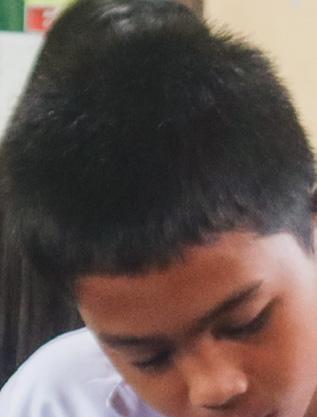
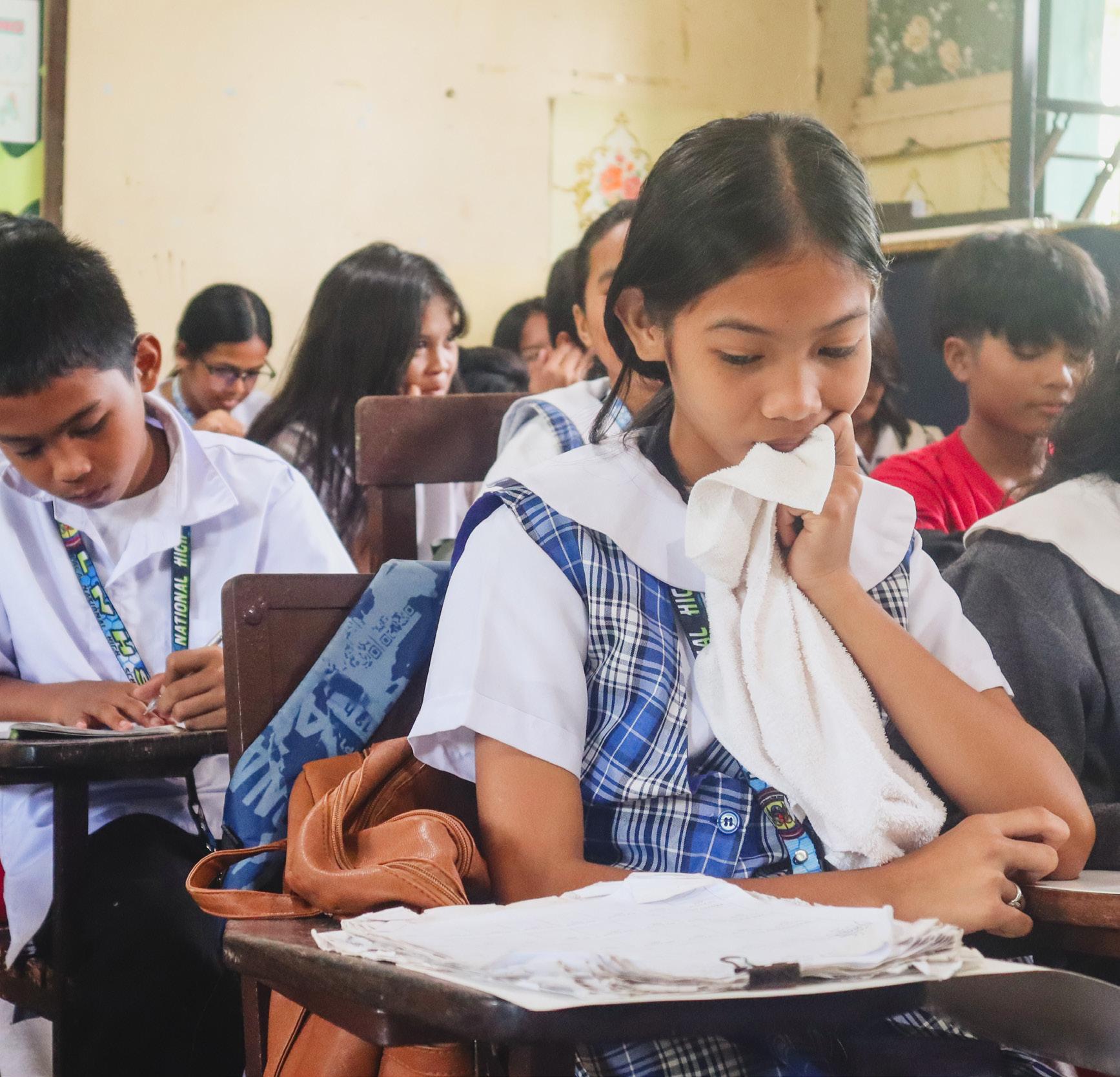
CLASS CLASH
LNHS faces overpopulation, prompts for new facilities

Nonetheless, Labrador noted that the situation has improved significantly, adding, “They don’t really bully me anymore because I think they have become more disciplined.”
Almann hopes for further advancements in inclusivity, particularly regarding school policies and events. “I want Pride month to be implemented,” she emphasized, reflecting a desire for recognition and celebration of LGBTQ identities within the school.
In addition to implementing Pride month, Labrador advocates for fair treatment of LGBTQ students concerning dress codes, asserting the need for a more inclusive approach.
by BETTINA ESPINELI
LalaNational High School (LNHS) is struggling with severe overcrowding, leading to a shortage of classrooms, facilities, and learning materials.
With 5,665 students—3,481 in Junior High School and 1,961 in Senior High School—the school is struggling to provide adequate space for learning.
Classrooms designed for 30 students now hold more than 50, making it difficult for teachers to manage their lessons effectively.
Jean Guzman, a mother of a grade nine student.
Teachers are also struggling to keep up with the overwhelming number of students in each class.
school’s PTA president. However, there is still no definite timeline for the approval and funding of the project.
Parents and school officials are calling on local leaders to prioritize the school’s infrastructure needs.

Head Teacher Joyce Villondo expressed concern over the situation, saying, “With so many students in one room, it’s challenging to give each student the attention they need.”

Due to the lack of available rooms, several offices have been repurposed into makeshift classrooms.
Despite these efforts, many students are still left without proper seating, forcing them to share chairs and desks or even sit on the floor.
Parents have voiced their frustration, saying that overcrowding affects their children’s ability to focus and learn.
“Ang mga room kay super crowded dili tarong ang mga gamit and facilities kay kulang kulang,” said
“Overcrowding makes it difficult to conduct effective lessons,” said Divina Pahaganas, a grade nine Filipino teacher, using one of the science laboratories as there classroom.
Furthermore, other programs, including the Open High School Program (OHSP) with 143 students, Special Education (SPED) with seven students, and the Alternative Learning System (ALS) with 73 learners, further strain the school’s limited resources.
In response to this crisis, school officials and the Parent-Teacher Association (PTA) have been pushing for immediate action.
A proposal has been submitted for the construction of a onebuilding, two-story structure with six classrooms.
“This is a much-needed project, and we hope the government will take swift action,” said Vincesar Yap, the
“Education should be a priority, and we need concrete actions, not just promises,” said concerned parent Teresa Ramos.
School officials, teachers, and parents all agree that urgent steps must be taken to address LNHS’s worsening classroom shortage. Without immediate intervention, students will continue to suffer from overcrowded and ineffective learning environments.
“We’re not just asking for a new building—we’re asking for a future where our children can learn comfortably and receive the education they deserve,” Villondo emphasized.
As the proposal awaits approval, the school community remains hopeful that real solutions will soon be implemented.
5,665 3,481 1,961
URGENT CALL FOR CHANGE
Following these incidents, parents and educators are urgently calling for intervention and prevention programs to address the growing drug problem in the school community.
Gina Dela Cerna, a concerned parent, expressed her worries at a recent meeting, saying, “Delikado na kaayo ang mga estudyante kay daghan na ang madamay, mahadlok na mi sa safety sa among anak.” She stressed the need for the school administration, local government, and barangay officials to collaborate and implement effective
intervention programs to tackle the root causes of drug abuse.
School principal Rodulfo Villarosa shared similar concerns, highlighting the importance of supporting students who are struggling and providing them with proper education about the dangers of drugs.
“We need to focus on building a stronger support system for our students, especially those at risk, and ensure they understand the longterm effects of drug abuse,” Villarosa emphasized.
THE NUMBERS DON’T LIE Lala has seen a steady rise in drug-related arrests, with 22 cases recorded from January to September 2024.
The majority of those arrested are charged under Sections 11 and 12 of RA 9165, for possession and use of illegal substances.
Section 11 punishes illegal possession of dangerous drugs, with penalties depending on the substance’s type and quantity, while Section 12 targets drug use and includes imprisonment or rehabilitation.
Youth involvement in drug-related


IN REGION X, LANAO DEL NORTE RANKS
DARK MARK 5TH
Lala grasps rising sexual abuse cases, fear minors, community
by JANEL BAGOLBOC
Lalamunicipality grapples with crisis as eight sexual abuse cases have been reported since August 2024, with six victims being minor students from Lala National High School (LNHS).
The rapid increase in these cases has shocked the community, with many residents expressing concern over the safety of their children.
According to local statistics from the Lala Municipal Police, there has been a 40% increase in sexual abuse cases this year compared to 2023, with minors making up 70% of the reported victims.
RISING CONNECTION
BETWEEN DRUG ABUSE AND SEXUAL VIOLENCE
Authorities and social workers have identified a connection between substance abuse and sexual violence in these cases.
According to Municipal Social Welfare and Development (MSWD) Officer Lowell Gingco, many suspects were under the influence of illegal drugs when committing these crimes.
“These reported cases are deeply alarming as most of the perpetrators were drug users or intoxicated during the act,” Gingco stated in an exclusive interview with The Bounty.
Six of the victims are incest survivors, while others were abused by neighbors or family friends.
THE UNSEEN VICTIMS
Dia (not her real name) was only 12 years old when she suffered repeated abuse from her stepfather.
She remained silent, fearing disbelief and retribution from her family.
It was only after a medical check-up on September 26, 2023, that the abuse came to light when she was found pregnant.
“Nahadlok kaayo ko nga mostorya sa akong mama kay dili ako tuo han,” Dia said.
Following the discovery, the school’s guidance office promptly reported the case to the MSWD for intervention.
Guidance Counselor Alito Delos Santos emphasized the urgency of their actions, stating, “We immediately filed a report with the MSWD and provided psychological assistance to the victim.”
CALL FOR JUSTICE
Despite these efforts, many cases remain unresolved, with legal proceedings either stalled or awaiting further evidence.
The MSWD has initiated biweekly home visitations for the victims to monitor their mental health.
The lack of swift judicial action raises concerns about the effectiveness of existing child protection mechanisms.
Social workers and law enforcement officials are now investigating the influence of drugs on perpetrators.
Community members have expressed outrage, demanding stricter law enforcement against drug-related crimes and immediate justice for victims.
Currently, Dia has moved in with her grandmother and is enrolled in modular learning to allow her time to recover.
Her stepfather remains under investigation, and she continues to seek justice.
“Gusto ko makakuha ug hustisya sa iyahang gibuhat sa akoa,” Dia expressed.
With eight documented cases of sexual abuse in Lala last year up to present, the community faces an urgent call to action.
Authorities, school officials, and advocacy groups are working together to strengthen protective measures and ensure that justice is served for the victims.
Teen Center to aid rising teen preg rate
by ALEXANDREIA BADILLES
Due to the alarming number of teenage pregnancies, Lala National High School (LNHS) has been chosen as the sixth recipient of a Teen Center in the province of Lanao del Norte (LDN).
In alignment with Executive Order No. 141, which prioritizes the implementation of measures to address the root causes of the increasing number of teenage pregnancies and calls for the mobilization of government agencies to support this effort.
Data indicated Region X has the highest rate of teenage pregnancy, with Lanao del Norte ranking fifth within the region, among schools in the area, Lala National High School, which has the largest student population, reportedly has the highest number of teenage pregnancy cases.
LNHS Teen center is aimed to provide assistance
NO BARRIERS.
Teacher uses sign language to communicate with SPED learner.
Photo by SAVANNAH NARISMA
UNIDENTIFIABLE
URGE. Lala NHS student suffering the aftereffects of sexual abuse. Photo by SAVANNAH NARISMA
admin plea PNP from 01
Villondo also mentioned that majority of students involved in misconduct were members of the Pantawid Pamilyang Pilipino Program (4Ps).
“Since kasagara sa mga students nga mareport sa guidance kay
4Ps, I have made it a point na once dili mag follow sa policy sa school and if dili maka-abot ug 85 percent attendance, I will not sign their certificates to help discipline the students,” she emphasized.
Police Community
offenses, including students from Lala National High School, has been on the rise, often driven by socioeconomic factors.
Lowell Gingco, MSWD officerin-charge, called for programs addressing not only drug abuse but also underlying issues like poverty and family problems.
In an interview, Gingco emphasized, “We need to offer more than just rehabilitation; we need to focus on prevention by tackling the root causes of why these students turn to drugs in the first place, such as broken families and financial instability.”
Relations, Arvin Paradero, has assured the admin that they will be roving around areas students frequently gather at during classes hours.
The administration has invited the PNP, along with local stakeholders,
TAKING ACTION In response to the growing number of drug cases in Lala National High School, school officials are actively working with local authorities to implement education and rehabilitation programs for affected students.
The local PNP-Lala, headed by Police Major Recto Iwangan, is committed to working closely with the school and community to tackle the drug problem through both preventive and reactive measures.
“We need to create more awareness about the risks and consequences of drug use, especially
the Department of Social Welfare and Development, 4Ps, and Barangay and Municipal agencies, to participate in the Parent Teacher Association General Assembly to discuss the issues raised.
for young people who are at a critical stage in their development,” said Police Major Iwangan. Additionally, the MSWD and local government are collaborating to ensure that proper counseling, support, and rehabilitation services are available for students like Nathan, offering them a chance at recovery and reintegration into society. Through these combined efforts, officials hope to reduce the number of drug-related incidents and provide a healthier and safer environment for the students of Lala National High School.
help in making ethical life decisions.
“The main goal is to empower the teen by equipping them with the knowledge, skills, and confidence to make better life choices,” expressed Frances Anne H. Dumaog, LNHS Teen Center coordinator, during an interview.
Moreover, programs like counseling, mentorship, emotional well-being, and self-care are offered to students.
The center funds were sourced from the province, Local Government Unit (LGU), and Population Commission (POPCOM), which aims to offer support to troubled teens, which emphasizes on
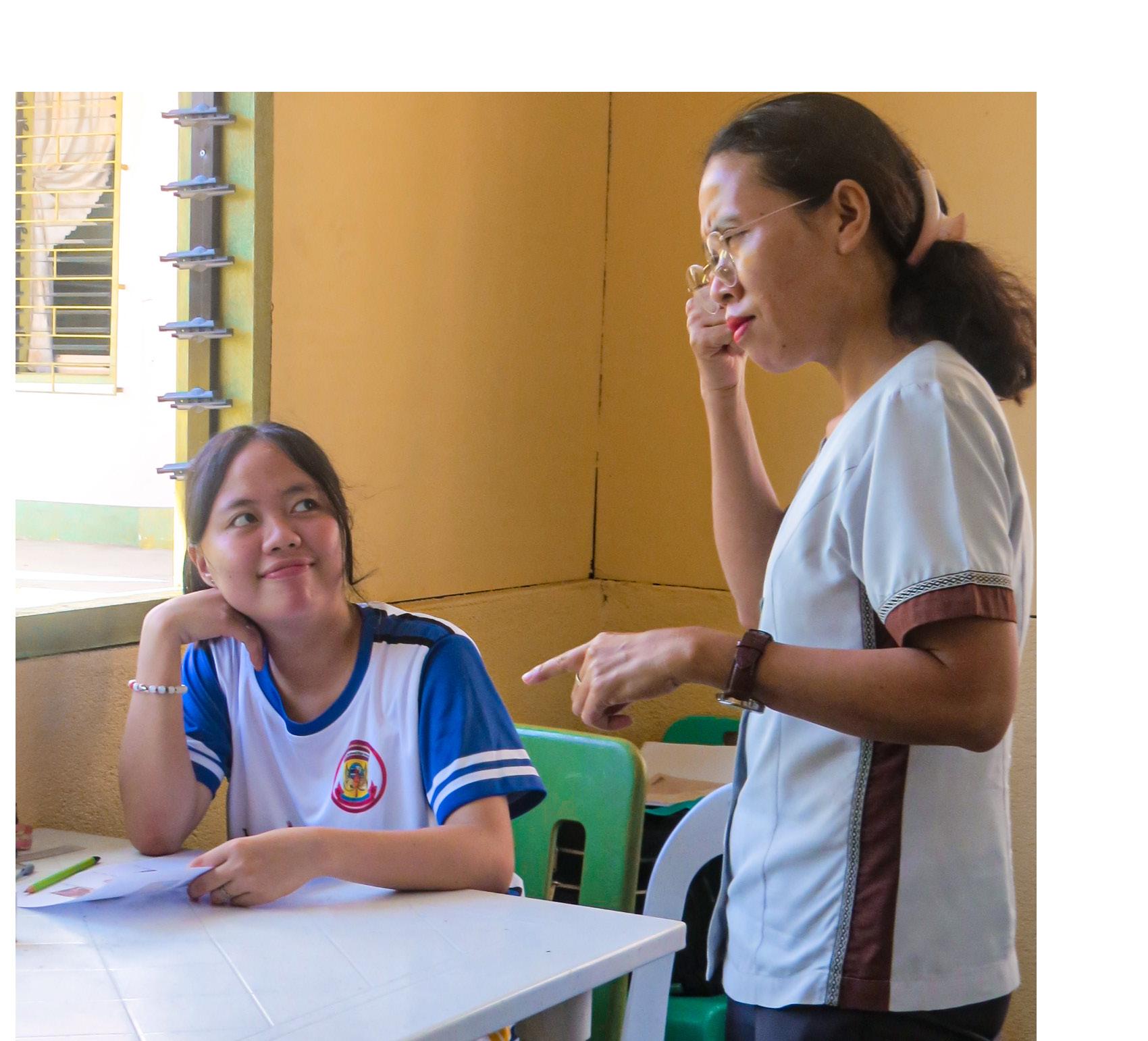
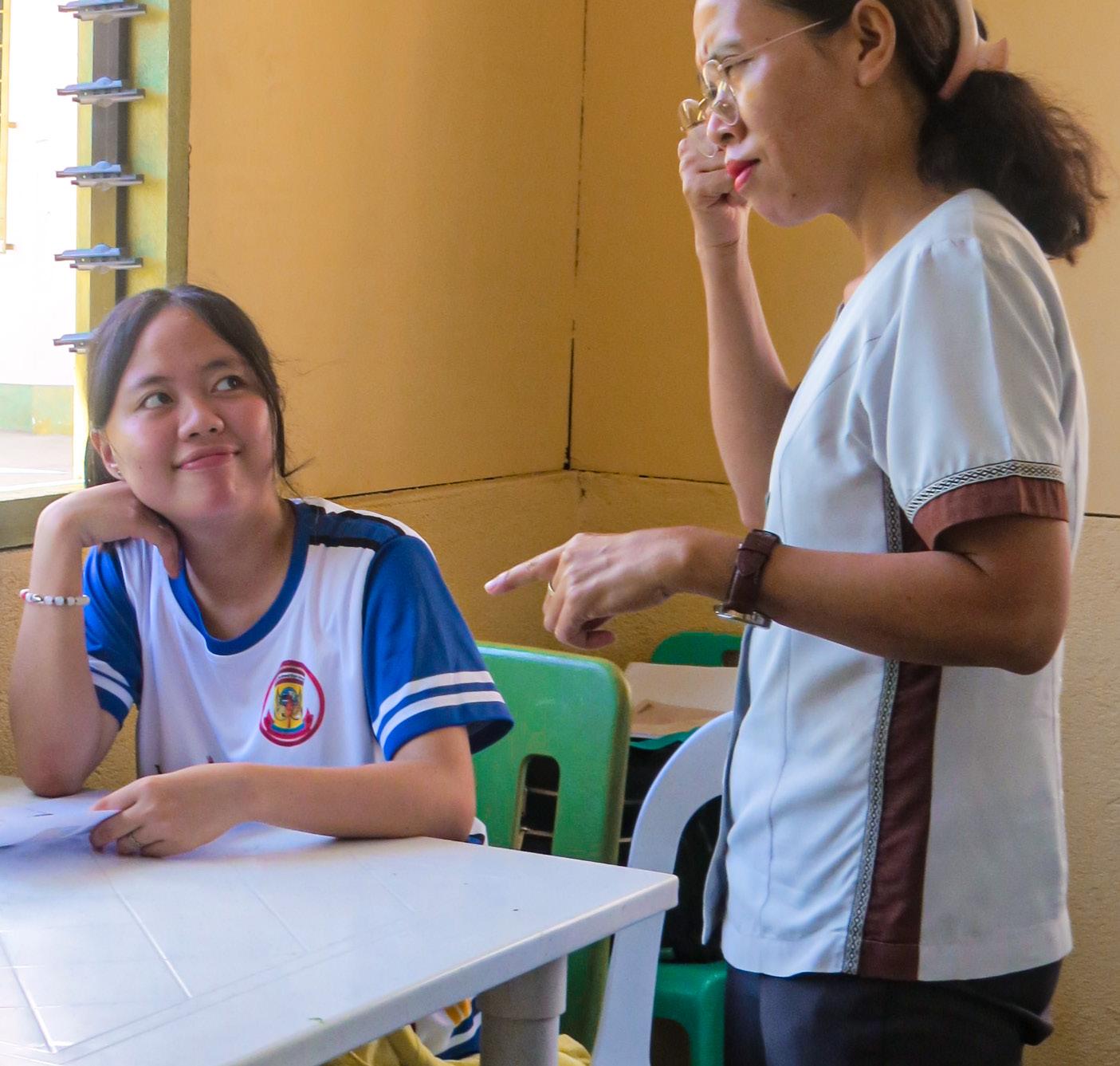
SPED stude pursues education amid discrimination
by BETTINA ESPINELI
Archielyn Teves, a Grade 7 Special Education (SPED) student at Lala National High School, was born deaf due to his mother’s illness during pregnancy; yet he remains dedicated to pursuing his education.
As one of eight deaf students enrolled at the school, he faces discrimination and isolation from his hearing peers.
In an interview, Archielyn expressed his frustration about being viewed as different and often underestimated because of his condition, stating, “Sometimes, people look at us differently, as if we’re not part of them.”
He conveys his aspirations through sign language, emphasizing his desire to build connections with others, saying, “I want to connect with others and show them that we are capable.”
Despite the challenges he encounters, Archielyn dreams of becoming an engineer and aims to promote inclusivity for individuals with disabilities.
Teachers at Lala NHS provide essential support to ensure that Archielyn and his peers receive a quality education.
According to Jenalyn Abergas, one of Archielyn’s teachers, “We are committed to
creating an inclusive environment, but it requires understanding and effort from everyone.”
However, the social stigma surrounding deafness continues to persist within the school environment.
Archielyn remarked, “Sometimes, I don’t know how to interact with them, and that makes it awkward,” reflecting the difficulties he faced in social interactions.
His determination serves as an inspiration, highlighting the need for greater awareness and acceptance of students with disabilities.
Archielyn hopes his journey will help others understand that silence does not equal inability, stating, “I want people to see us for who we are and what we can achieve.”
As he continues to advocate for inclusivity, Archielyn Teves stands as a powerful example of resilience and hope within his school community.

Fatalities of Fame
TECHY KA-TECHY by ROWELL DAYAGBIL
As social media spreads throughout the digital world, fame also unfurls. However, famous individuals can face firm issues with small mistakes and attain some criticism from citizens just by eyeing their outside. This matter is one of celebrities’ biggest nightmares. This case born the occurrence of the so-called “cancel culture.”
As we believe, “nobody’s perfect”; anyone can make an inaccuracy. Yet, mistakes made by famous social media users, even if it’s a small matter, netizens see it as so big deal, spreading information, whether fake or not, throughout. We must not be blinded by a society full of fallacies; this will lead us to a cruel world.
In October 2020, Angel Locsin was red-tagged by Lt. Gen. Antonio Parlade Jr., who accused her of being linked to communist groups. She feared that, because she had been redtagged by a military official, the same could be done to those she associated with. Locsin criticized the National Task Force to End Local Communist Armed Conflict (NTF-ELCAC) official for engaging in red-tagging instead of bringing up related issues to the proper forum. The harmful effects of cancel culture outweigh its benefits, turning it into a weapon of social destruction rather than a force for justice. Cancel culture even extends to a point where a certain celebrity did something offensive
a decade ago and then brought it up to dig them into a deeper grave. A similar situation happened with Coco Martin’s photoshoot during the early 2000s, calling out its obscenity.
Cancel culture does have a benefit amidst its disadvantages, it calls out artists for their wrongdoings and prompts celebrities to apologize for their behavior, like the situation with Maris Racal and Anthony Jennings, but what’s not right is trying to skew a response from them. Despite the inexcusable act, it is still necessary to hear their side out before we prompt to cancel them since it’s not always correct when we only see one side of a coin.
We must practice the essence of skepticism rather than being too confident to craft an issue without firm evidence. That is why many innocent people suffer and even die due to inappropriate misconceptions. Only by balancing accountability with compassion, we can create a culture of true justice and progress.

86.75M
As of Jan 2024, the PH has social media users equating to 73.4% of entire population. 117.4 million cellular mobile connections active equivalent to 99.3% of entire population.

It goes beyond the cross. It extends to government policies and societal norms as a means of enforcing doctrines that often fail to meet the needs of diverse people. Time and again, opposition from the Church to progressive laws—such as the Reproductive Health Law and the fight for divorce legislation—has evidenced that actually, its priority is keeping control rather than that of well-being and freedom of Filipinos. Such a domination leads to the systematic exclusion of marginalized voices, killing dissent, and incapacitating the country’s quest for inclusivity and social justice. Situated at the heart of this issue is the pervasive influence of the Church in the political decision-making process, where laws are fashioned to best suit a moral framework rather than the real needs of the people for decades. This was very evident through consistent opposition to reproductive health services, where millions of Filipino women
and their best interests are cut off from basic healthcare, especially in rural areas.
The Philippine Statistics Authority (PSA) states that more than 1.3 million women fall victim of physical abuse yearly, but the country’s refusal to legalize divorce traps even more in these harmful marriages. Such policies result in a society where the Church’s doctrines limit the rights and freedoms of individuals, particularly women, perpetuate social inequality, and hinder real progress.
Equally troubling is the lack of inclusivity on the part of the Church. The Filipinos are left behind by the embracing arms of the Church because many of them are not cut from the traditional norms. This isolation of people not living according to the Church’s strict interpretation is what has given rise to a non-love environment, a place where people cannot live out Christ’s message. Women are still denied leadership positions in the
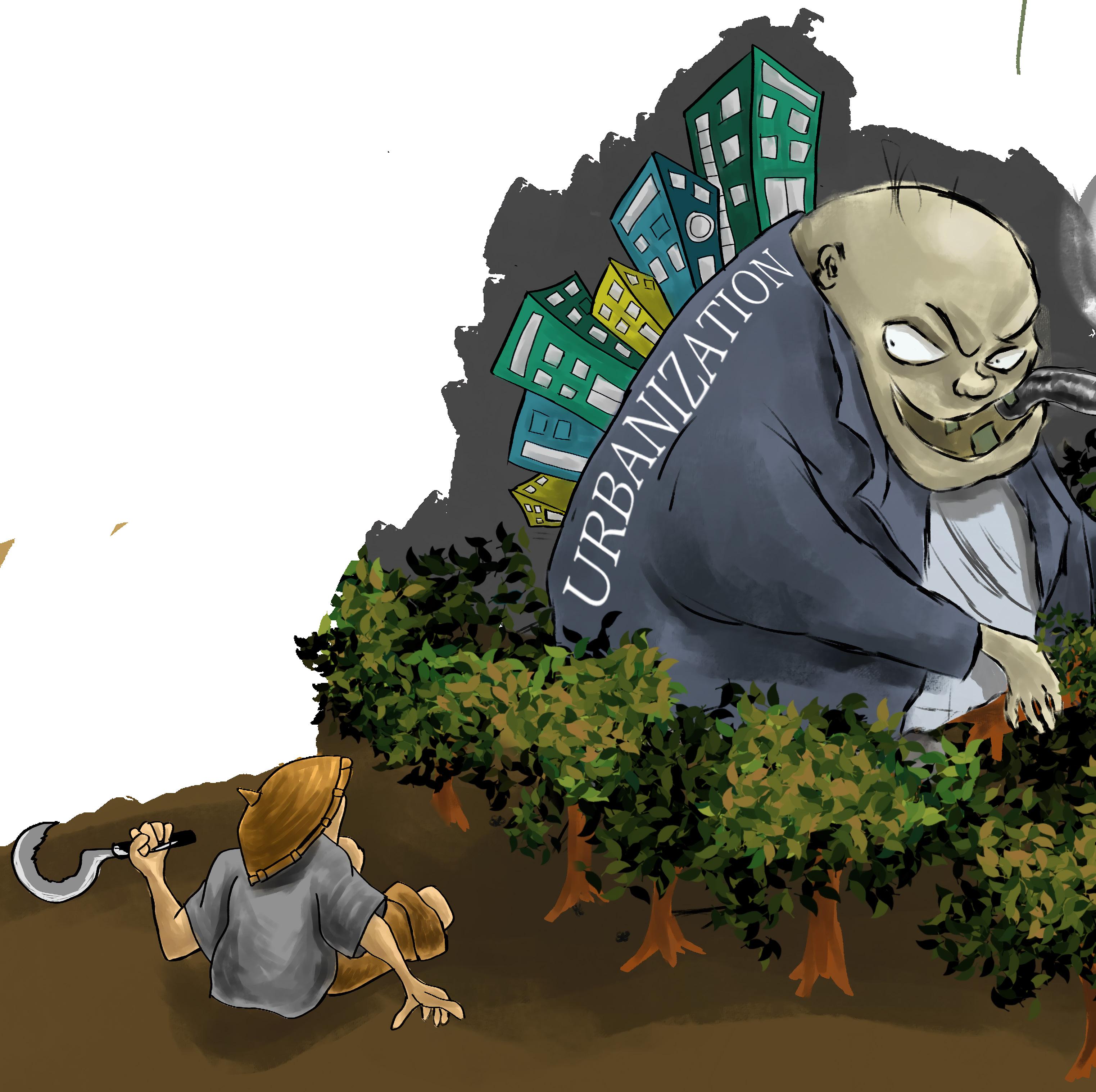
Beyond the Cross
The Church must evolve to embody the love and service it preaches, becoming a sanctuary of healing and empowerment for all. “
institution, which continues to perpetuate patriarchal structures that devalue their contributions and voices. This exclusionary approach stands in direct conflict with the very
principles of faith the Church claims to espouse, turning its message of love into one of judgment.
These systemic issues are deeply connected to the broader challenges of religious trauma and misinterpretation of scripture. Emotional scars these survivors and the burdened are left with often go unredeemed. Harmful practices and doctrines are read and used as scripture to smother a life of freedom, and control instead of comfort. The Bible, a source of guidance on spirituality, becomes a source of oppression. This dislocates individuals from the word that can guide them.
Reform does not mean giving up faith; it means a return to the core teachings of love, mercy, and justice that Christ embodied. The Catholic Church in the Philippines now has the greatest opportunity to become a beacon of hope—a real beacon, that is embracing its people in a manner it did not when these were not in its favor. The
reformation of its stance, the modification of its doctrines into what best responds to the diversities and developments of the Filipinos, is a possibility the Church could be as that force for uplifting and empowerment instead of a hindrance to progress. It calls for a confrontation of past failures, the promotion of inclusion, and a healing space addressing compassion and understanding. Faith is supposed to bring together rather than split off; free rather than enslave. The Church has the mandate to stand out as a beacon for a society crying out for justice, not a bar to change. By evolving in true accordance with the principles of love and service that it preaches, it can reclaim its moral right to become that compassionate force in the lives of Filipinos. Its clear path forward is to become a sanctuary of healing by empowering and making everyone feel included on their pathway to a more just and united future for this nation.


DEMOGRAPHIC DISTRIBUTION OF THE STUDENTS ACCORDING TO RELIGION
SUPPLY
SEPARATION OF CHURCH AND WHAT? by MALVIN LOQUINTE
The Catholic Church’s hold on the Philippines is not faith– it is control, silencing rights, crushing progress, and excluding those it claims to love.

CONCRETE AWAKENING
midst the inevitable reality of urbanization within the Philippines, I can truly concur that our country has faced much backlash concerning the government’s decisions on this matter. This includes the people’s instinct to rebel against the matter, as some Filipinos live in the countryside counterpart of the country. Because of that, their lives depend mostly on what nature provides, like farming. This would affect their welfare as citizens of a developing country, leading to a problem
In 2020, according to the Philippine Statistics Authority, the Philippines’ population had a record of 54.0% living in urban areas, from 51.2% in 2015. Now although this is a beneficial result, the utmost inabilities of people belonging to the povertyaffected areas are unimaginable, as most of them would have problems with their limited access to resources, as well as being vulnerable to scams when it comes to housing and such, as they are commonly perceived to being uneducated, as per se, Compassion International. This does not solve the issue of a low economy, but only improves infrastructure, and the people who can afford it.
In addition, ChildHope Philippines has stated that children in poverty in our country are prone to lack of basic needs: food, water, shelter, and such. Therefore, they are technically frail when it comes to dying. That is why, by simply prioritizing health instead of the infrastructure of our nation, the government’s burden to provide the people with what they need would be lightened, but for some reason, it seems impossible to happen.
FUTURE-READY by
DALE DIVINAGRACIA
True growth begins when we stop relating our struggles to being a barrier and the fertile ground upon which opportunity develops.

Recently, a concerned citizen expressed that even after the government’s actions for urbanization in Lala, Lanao del Norte, problems are still present. Even after implementing the widening of roads, illegal parking still fails to disappear, according to the Philippines’ Republic Act no. 4136, Obstruction, or parking on the side of a road or sidewalk without authority is considered an offense where the apparent penalty is around 150 - 1,000 Pesos. But for some reason, these warnings or punishments still do not



Although growth hubs are beacons in cities like Metro Manila, other regions, such as Lanao del Norte, face their own set of issues. Its potential remains veiled by low purchasing power that hinders most of the province’s residents’ ability to budget even for a brighter future, as most can barely afford the basics. Meanwhile, while the rest of the country keeps its momentum going, Lanao del Norte’s economic growth remains hampered by gaps in infrastructure and opportunities. Yet, through proper strategies and investments, it may still overcome such hindrances
affect the perspective of most people towards proper rules and regulations of the road. This issue must be raised regularly to alert the government of what the well-being of their so-called “urbanization” truly is. Moreover, urbanization in the Philippines is still occurring, so mistakes can be made, but that does not mean that the government must not make contingency plans to counter challenges that may arise whenever unexpected events happen. That is why focusing on the welfare of people, whilst improving infrastructures greatly demonstrates the versatility of a country and its people. Therefore, by simply assessing the general problem via a broader vision, our country’s problems regarding the people opposing urbanization would be turned into oblivion. Remember, a country’s heart and soul are the people, not the beauty of a country just by basing it on modernization.
Slam the Phobia
CHRYST SALVEDIA
Islamophobia, prejudice, and apprehension against Muslims are significant issues that affect millions of people globally. It spreads hate and creates divisions by fostering an ‘us versus them’ mentality, where Muslims are unfairly viewed as outsiders or a threat to society, it leads to discrimination in workplaces, schools, and communities. ALL THE -IA by
Islamophobia is driven by stereotypes and misinformation about the Islamic community. Many people associate Islam with terrorism, although the majority of Muslims are peaceful and reject violence. This apprehension and fear against Islam lead to hate crimes, bullying, and unfair treatment.
For example, a Muslim woman is often passed over for job opportunities, disregarding her potential and being qualified for the position. Employers assume her religious attire makes her less capable or committed to a certain position, these kinds of stereotypes are the kind of things that lead to discrimination in the hiring process.
In a Report on International Religious Freedom released on June 27, 2023, the
State Department listed several incidents from the past year involving actions demonstrating discrimination against Muslims. The report found several cases of discrimination and abuse against Muslims, including offensive comments online, on TV, and from Senator Robin Padilla, who is also a Muslim convert. The State Department, referencing Senator Padilla and the Commission on Human Rights, noted the “limited availability” of Halal food for Muslim inmates because of budget constraints and overcrowded jails. Halal food, allowed under Islamic law as outlined in the Quran, is essential for Muslims.
Education is key, when it comes to fighting islamophobia, learning about Islam and the
diversity of Muslim culture can help break down the stereotypes. Encouraging open conversations about religion, and beliefs, and promoting empathy can reduce prejudice. Governments, schools, and social media companies should take stronger actions to protect our Muslim brothers and sisters from discrimination and apprehension and ensure equal rights for all. We can all play a role in this battle fighting islamophobia. Starting by educating ourselves and keeping an open mind of Islamic culture, beliefs, and challenging stereotypes. Normalize speaking out when discrimination occurs, whether online or in real life. Together we can break barriers and build a more understanding and united world.
“
Together, we can break barriers and build a more understanding and united world by educating ourselves, challenging stereotypes, and standing against discrimination.
3%
in Economic Recovery as of 2022 through agriculture.
and start charting a new course toward a brighter future.
Purchasing Power with Peso (PPP) is an ideal economic amount in real life. It is manifested by an individual or group’s capability to acquire goods and services. The figures for February 2024, as published by the Philippine Statistics Authority (PSA), have been alarming: the country’s PPP has plummeted from ₱0.83 in February 2023 to ₱0.77. What this means is that Filipino families require more pesos to purchase the same items they could have bought a year ago. The lower the purchasing power, the smaller the household budgets, and the harder it is for families to get by. Although this is the situation nationwide, there is still hope for Lanao del Norte to take control of its economic destiny.
Lanao del Norte is full of promise: it has fertile soil, rich culture, and potential for a dynamic future. But challenges abound: there is poor infrastructure, limited market access, and an economy overly dependent on agriculture-an unpredictable industry. But those are not impossible hurdles to clear. They are waiting for opportunities to be grabbed. The right investments and strategies can help free Lanao del Norte from the shackles of low PPP, and this province can be the model for the rest of the nation to prove that a region can rise if it puts its heart into change. The way to start raising the PPP of Lanao
del Norte is to raise the income. Agriculture is still the backbone of the local economy but is yet untapped. By giving the farmer access to modern technology, better training, and more equitable market prices, productivity is increased. When incomes rise, people spend more within their community, which generates a positive ripple effect that enhances the local economy. This disposable income will help not only families but also the region’s purchasing power. But improving incomes is only half the story. In unlocking the full potential of the economy in the region, infrastructure development will help. Better roads, more reliable energy, and improved digital access will become critical to the growth of businesses. Without such, businesses will not thrive; consumers will end up paying a premium to obtain goods and services. With improved infrastructure, both businesses and people grow. With better market access and reliable services, Lanao del Norte’s PPP can soar high.
Perhaps the greatest asset that Lanao del Norte has is its people. The region needs the right tools in its workforce to succeed. Thus, investing in education and training in the skills needed for the workforce, both among the young and the old, would be important. Equipping the people with skills needed for new industries will position the workforce ready to take up higher-paying jobs, which eventually will contribute to economic growth and improved purchasing power. When people are improving their lives and building a better future for themselves, then all of the community benefits.
In unlocking the full potential of the economy, however, Lanao del Norte should leave no one behind. It’s not merely the economy boosters for the chosen few; it’s an empowerment of every citizen—from the farmer tilling his or her field to the city-based entrepreneur, and everyone in between. Inclusivity and equity must be at the heart of every decision to make sure that growth can be felt by all. People will then invest in their communities, in their futures, and in the promise of a better tomorrow when they feel their hard work pays off and their families thrive.
Lanao del Norte may not shine on the national level for now, but it does not mean that the province cannot succeed. The way to greater purchasing power is clear: improve infrastructure, invest in education and skills, support local industries, and, above all, ensure that everyone is part of the journey. The people of Lanao del Norte have the resilience, determination, and potential to turn things around. With the right investments and the right steps, this province can be lifted into prosperity. The most underserved regions of this country can thrive when given the tools they need. It’s time for Lanao del Norte to shine, and with collective effort, it can become an example for all of Mindanao.
Lanao del Norte show

How Adnanie shows his true colors
by CHLOE TO-ONG
What exactly is the most painful feeling?
One such unique soul is Adnanie, a Grade 10 student from Lala National High School. From an early age, he felt a deep sense of difference, knowing his heart beat to a rhythm that didn’t match societal norms. His realization of his attraction to boys came with confusion, but it wasn’t until he saw his older brother, a proud member of the LGBTQ+ community, that he understood what it meant to embrace one’s truth with courage.
Prancing Through the Rainbow 06 Dreams in Sync
Adnanie, a Muslim navigating the tension between faith and identity, found strength in his brother’s example and his family’s support to embrace who he is.
In the Philippines, where 11% of sexually active Filipinos are in same-sex relationships,
Adnanie’s story highlights growing acceptance. Through the LGBTQ+ community, he finds love, belonging, and the affirmation that “they make me feel seen.”
“The judgment of others does not define me,” he said with pride. “I will stand tall, no matter the storm.” Today, he stands not just as a student but as a warrior of truth, his identity a crown worn with grace.
Adnanie’s journey reminds us all: love, in all its forms, is not to be hidden or ashamed of, but to be celebrated with joy. For it is not the opinions of others that matter, but the strength to be true to ourselves—bold, beautiful, and free.



ADNANIE’S ADRENALINE. Despite the shackles of religious setbacks, Adnanie continues to express her beautiful self to the public.
Photo
by
ALETTA AMEN

ECHOES IN THE QUIET
How Archielyn stood against discrimination
by HERMIONE YLAYA
The hum of conversation and music reminds us of how sound connects us, but for some, silence creates distance. At Lala National High School, deaf students face this challenge daily, striving to be seen for their abilities and dreams, not their silence. Despite the challenges they face, their ambitions remain undeterred.
One of these students is Archielyn Teves, a Grade 7 student with big dreams. Born without the ability to hear, Archielyn’s life was shaped by his mother’s battle with measles during pregnancy. Growing up in a world where sound is the foundation of communication, Archielyn learned early on to adapt. Archielyn aspires to be an engineer—not just to build structures but to create a world where he and others like him are recognized for their strengths.
Archielyn is one of eight deaf students at Lala NHS, each facing the struggle of being seen as different.
“Sometimes, people look at us like
extends beyond personal success—he wants to foster understanding and show the world that those who are deaf have just as much to offer as anyone else. Archielyn aims to prove that his silence doesn’t mean he is any less capable than his peers. The teachers have become Archielyn’s strongest allies, providing the support he needs to succeed. Yet, despite their efforts, Archielyn and his fellow deaf students still feel separated from the rest of the school. “We just want to be one of them,” Archielyn signs, representing the collective wish of all deaf students at Lala NHS—to be seen as equals, not outsiders.
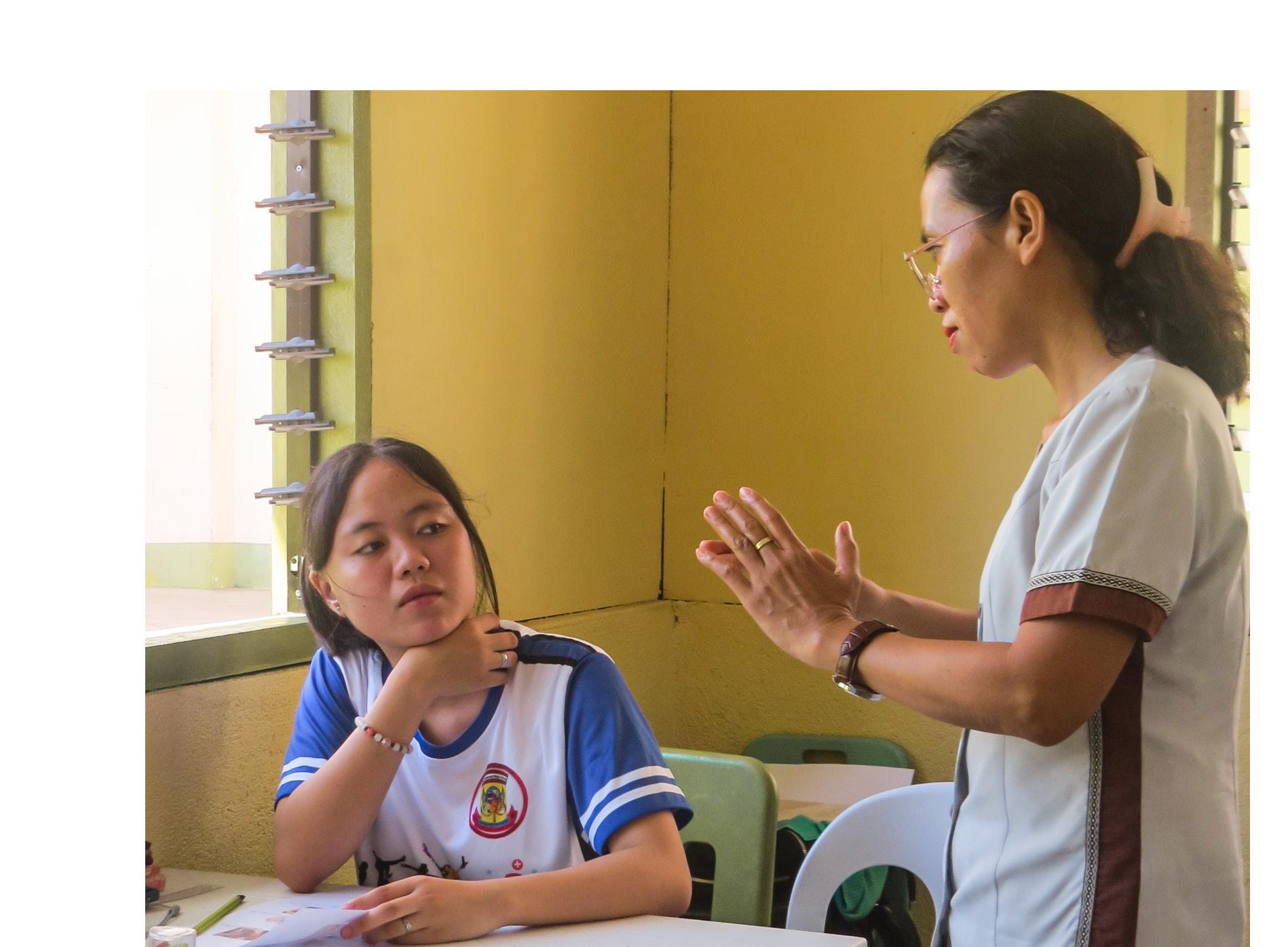

by BETTINA ESPINELI
It’s quite uncommon to share the same hobbies and interests with your siblings. While some don’t mind having different passions, others bond over shared activities like sports, music, or gaming.
But that’s not the case for Lala National High School alums and brothers Hans Ethan and Heinz Aslan Carbonilla. While Hans doesn’t consider himself particularly sporty or athletic, his younger brother embodies those qualities, making them polar opposites in that regard.
In fact, when it comes to spending time together, they rarely find themselves on the same wavelength. But one thing that sums these siblings up? They are both achievers in their own fields— Hans in journalism, while Aslan in international competitive sports.
GROWING UP CLOSELY
Growing up, Hans, the former associate editor of The Bounty, and Aslan, a former lawn tennis athlete for LNHS, shared a room. But that doesn’t mean they were always as tight-knit as they are now. As Hans chuckles, “Our relationship evolves over time.”
Indeed, over the years, their bond has strengthened in ways they never anticipated. They’ve come to realize that they’re truly a team— rallying around each other in their individual pursuits and becoming each other’s support system.
There’s an unspoken rule between them: whenever one has a competition or major event, the other is there to offer support, no questions asked. It’s this foundation of mutual respect and encouragement that has helped them navigate both personal and professional milestones.
Fast forward to today, and their respective achievements have cemented their individual success. Hans, now the youngest Editor-in-Chief of MYX Global at ABS-CBN, has quickly made his mark in the media industry. Aslan, on the other hand, has achieved greatness on the tennis courts, clinching international trophies from various countries and becoming the top rookie for the University of the Philippines Diliman lawn tennis team.
Despite their very different paths, their growth and success reflect just how far their bond has come—evolving from sharing a room to being there for each other during their brightest moments.
“I think sharing a room with my kuya has helped me manifest these success energies. He’s a champion, and that’s made me believe I am a champion too,” Aslan shares.
Their dynamic, shaped by a six-year age gap, has always been one of give and take, with Hans often taking the first step. Yet, despite their differences, they’ve achieved far more than either of them expected in their younger years. Hans, for
instance, became a global correspondent for a major magazine, representing the Philippines, and later took on the role of features editor for Parcinq Magazine right before graduating from UP. Aslan, at just 12 years old, trained with tennis legend Rafael Nadal in Spain and traveled across Asia for championship tournaments, marking the beginning of his own remarkable journey.
And the story doesn’t end there—both are far from finished with their respective journeys. Hans, at just 24 years old, continues to make strides in his career, while Aslan, at 18, is only beginning to scratch the surface of his potential.
WHO’S WHO
The most cherished memories of growing up are often tucked away in the most unexpected corners of the house. While some might overlook the everyday moments, it’s in those seemingly ordinary times that we discover the greatest laughter—and, occasionally, even the biggest disagreements.
As they mature, Hans and Aslan have learned to rise above the small squabbles that once ignited easily in their younger days. Of course, this isn’t to say they never clash—after a tough day at work and school, especially now that they both live in Manila, tensions can sometimes flare if one of them is having a rough time.
Yet, over the years, they’ve both come to realize that confrontation is just part of their dynamic as brothers. It’s not always smooth sailing, but it’s in those moments of discord that they find their resilience as a team.
“Now that we’re in Manila, it’s the two of us against the world. So, wala ko’y choice,” Hans jokingly remarks, referencing their close-knit relationship and the challenges they face together in the bustling city. This bond, forged through years of shared experiences and growing pains, continues to evolve as they navigate the complexities of adulthood side by side.
“It’s not always about winning; we stumble at times—but that’s okay,” Hans adds. “We learn from each other and from our parents that not every day is our day, and that’s alright.”
Through both victories and setbacks, Hans and Aslan have come to embrace the ebb and flow of life, knowing that their strength lies not in perfection, but in their ability to grow together— picking each other up when necessary and moving forward as a united force.


How the Carbonilla Brothers are Conquering Success Together
Photo by SAVANNAH NARISMI
Photo by HANS CARBONILLA
PHILIPPINE SCHOOLS
Quake Ready or Risky?
by JANEL BAGOLBOC
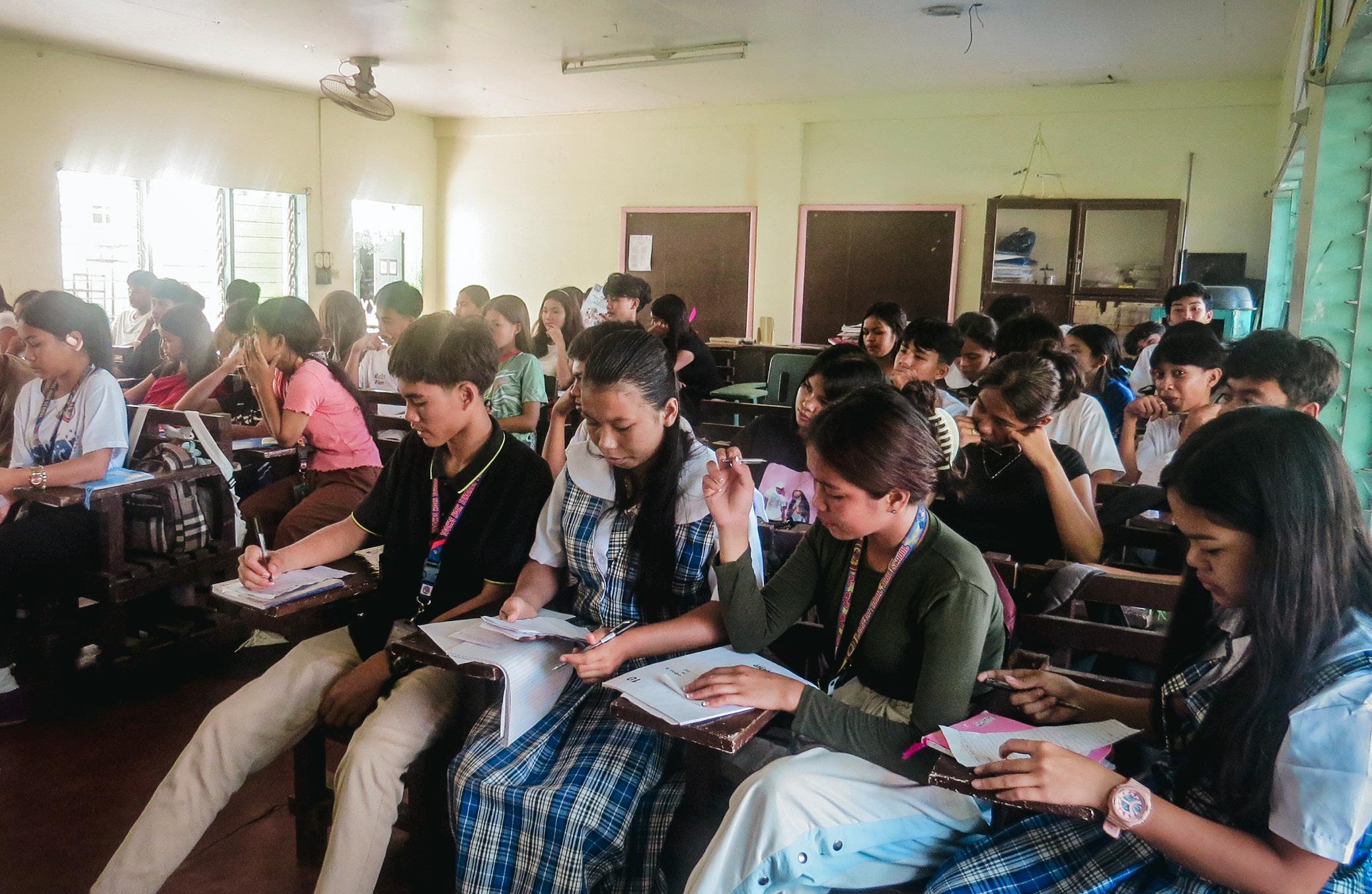
CRAMPED SETTING.
Classroom in cramped up setting, catering 50 students when classrooms can normally hold 40. Photo by SAVANNAH NARISMA
CROWDED CLASSROOMS, COMPROMISED MINDS

In the Philippine Archipelago there are at least 20 earthquakes that are experienced daily and four out of five of these tremors are strong enough to be felt by people, according to the Philippine Institute of Volcanology and Seismology. Additionally, statistics from National Geophysical Data Center / World Data Service (NGDC/WDS) says that shakings that reach a magnitude of 7 or more, occur in the country every three years. Knowing the great risk brought by the Earth’s wrathful roar, are the schools ready for it?
Filipino students spend the majority of their day at school, at least eight hours daily, amounting to about 1,600 hours annually.
With so much time spent on campus, the potential for risks, including natural disasters like earthquakes, becomes a significant concern for their safety. However, despite of the frequent shakings and the significant time students spend within school grounds, many schools across the Philippines remain ill-prepared to handle such natural disasters, leaving students vulnerable during major quakes.
major repairs or are set for demolition due to poor standards.
In Lala National High School, there are already several buildings that are designed to resist different calamities, like earthquakes, despite it being high-rising. However, due to the massive number of students in the institution, many old classrooms that do not meet the standards are still being used in order to accommodate the students and serve them.
by JIEAN RAVE S. MAASIN
lants need a garden to grow, but when too many plants settle in a singular garden, it can pose a long-term threat to all of them. They cramp up together, unable to obtain their needed nutrients to flourish, continuously competing to fend for themselves. They struggle and eventually flail. This captures the essence of the current situation of classrooms today, students cramped up, unable to focus, and flailing.
In Lala National High School, the largest school in Lanao del Norte division, classrooms accommodate 5,592 students daily. With each holding an average of 54 students, exceeding beyond the Department of Education’s standard 45 students per rooms. The dense population in learning spaces not only affects educational quality but poses scientific challenges that impact cognitive performance, and health risks.
Every day, the students have to struggle with over crowdedness. There is not enough space for them to absorb the learning they have to acquire, due to the noise and the chaos inside a tightly packed classroom. Their brains are not able to focus and it makes it much harder to retain the knowledge, just like those plants struggling to nurture their own selves in an environment that can barely support their needs.
In a study done by experts from Walden University about how overcrowded classrooms affect education, they stated that the more students, the noisier it gets which leads to disruption of classes. It also affects the concentration of the learners, altering the learning outcome, and it becomes harder for the teachers to manage and teach leading to a more stress and even burnout.

HOW THE BRAIN STRUGGLES IN A SEA OF DISTRACTIONS
Our brain is a fascinating organ; however, it still has limitations which hold it from functioning properly, just like concentrating. The brain is like a powerful computer for data processing, problem solving, and learning new things. Computers are amazing tool that works just like our brain, it can process information, and can even
manipulate it, but if something disrupts the system of that device, it cannot work properly, just like when the brain is distracted, neurons cannot work in harmony.
According to a study by the Iranian Journal of Public Health, the brain cannot work properly in tightly packed and noisy environment, because it disrupts the intricate pattern of the brain, potentially affecting the proper cognitive function of the organ. With the brain not functioning well, attention is hard to sustain, lesson is tough to attain, and knowledge is difficult to retain.
CLOSED QUARTERS, RISING RISKS
Studies also found out that having an overfilled classroom puts students’ health at risk especially in rainy seasons where flu and other transmissible viruses are rampant. According to the World Health Organization, crowded spaces increase the risk of close contact between individuals which then leads to the quick spreading of respiratory droplets containing viruses. Surfaces in congested areas have a high risk of being contaminated which also poses the same danger to students.
This problem is not only existing in the said institution, its existence is also evident in many
parts of the country as well as on a global scale. In fact, a data from Rappler states that the Department of Education said that they are having a shortage of 159, 000 classrooms this last school-year opening. However, despite this widespread hindrance of quality education, it still remains unsolved, as population rapidly increases outnumbering the quantity of classrooms that could cater the students to provide an excellent learning.
This amplifies the voices of those directly affected, urging educational leaders and policymakers to prioritize reducing class sizes and fostering healthier learning environments. The future of our country depends on its students, but their future hinges on the decisions you make today.
LALA NATIONAL HIGH SCHOOL CLASSROOM TO STUDENTS RATIO IN CONTRAST WITH THE DEPED PRESCIRBED
1:45 1:54
CLASSROOM TO STUDENTS RATIO, LALA NATIONAL HIGH SCHOOL HAS
CLASSROOM TO STUDENTS RATIO– NINE STUDENTS HIGHER THAN THE NORMATIVE STANDARD.
According to the study of D’Ayala, D. (2018), entitled “Increasing Seismic Resilience of the Philippines’ School Infrastructure through Structural Retrofitting,” many school buildings in the country are not originally designed with earthquake resistance. Though the percentage of these classrooms are not specified, it is still widely acknowledged that a significant portion of school buildings do not meet the standard safety measures for earthquake preparedness. Especially those old buildings that are being used until now due to the lack of learning facilities. This is supported by the report from the Department of Education (DepEd) itself and the Department of Public Works and Highways (DPWH) which highlighted that many school buildings need
On the brighter side, the DepEd and the DPWH have seen and have not neglected this very concerning problem. In fact, actions are already in progress to address this dilemma. The department has allocated P65.4 billion to build over 47,000 classrooms in 2025 which meets the safety standards and can surely withstand different calamities. This initiative was made after the 6.7-magnitude earthquake in Surigao del Norte which has damaged a lot of classrooms in the province.
The safety of our students must be a top priority, especially as earthquakes and other natural disasters become more frequent. While the government’s efforts to build resilient classrooms are a positive step, we need to accelerate the retrofitting of older buildings to ensure their safety. It’s time for everyone to advocate for stronger, disasterresistant schools, so our children can learn without fear.
The Science behind Overcrowded Schools

Blue Hawks rule ‘24 MILO Cheerdance Competition
by BETTINA ESPINELI
Overcoming months of challenges and setbacks, the Blue Hawks Cheerleading Squad of Lala National High School soared to victory and secured the championship title in the 2024 MILO National Cheerleading Championship held on December 19 at Centrio Ayala Malls, Cagayan de Oro City.
The team delivered a high-energy routine that featured complex stunts, synchronized tumbling, and well-executed formations, earning the judges’ approval and the crowd’s admiration.
Under the leadership of Coach Jovanny Pangasian, the Blue Hawks followed a rigorous training schedule, balancing their academic responsibilities, family obligations, and physically demanding cheer practices.
Calumpang rules
LaNorte ‘24 Athletics amid bad weather

ATHLETE CHECK

SMASHING LIMITS SPORTS
The Josh Lim’s Path to Golden Glory
by SAVANNAH NARISMA
For many athletes, silver stings more than bronze and can be a bitter pill to swallow. The journey and progress of trying to stand on the podium summit can bring an immense sense of disappointment that overshadows the achievement and satisfaction of triumph. The bittersweet feeling of winning silver can leave a lasting impact on an athlete’s psyche and dims their optimism to aim higher.
But this does not deter Josh Benedict Lim, a grade 9 student-athlete of Lala National High School, as he seized silver and took it as an opportunity to strive for excellence rather than taking it as an agonizing downfall. He won silver in the 2023 Lanao del Norte Provincial Meet and still qualified for the regionals as the division decided to take the gold and silver medalists in the tennis singles.
Josh redeemed himself at the 2024 Northern Mindanao Regional Athletics Association (NMRAA) in Camiguin last May by bagging gold in tennis doubles alongside Lanao del Norte National Comprehensive High School’s Kurt Bandolis. This success sent them to the Palarong Pambansa in Cebu City last July, where they again partnered and earned another silver medal against Davao Region.
Despite the familiar sting of silver, Josh and Kurt remained unfazed. Instead of dwelling on the disappointment, they turned their attention to recognizing areas of improvement, refining their strategies, and seeking ways to enhance their skills. This fueled their determination to return stronger and more prepared.
“Competing at the national level challenged me to push beyond my limits. I learned to value discipline and preparations as I faced competitors who were skilled and determined and gained a deeper appreciation for the power of teamwork, the support of coaches, and the
Legacy in Motion
by SAVANNAH NARISMA
For most people, it’s often believed that greatness runs in the blood, and for a younger brother, this couldn’t be more accurate. With a taekwondo legacy already engraved by his older brother in the hallowed halls of San Beda University, he is now setting foot onto the same dojang, preparing to forge his own path while acknowledging and embracing the one paved before him.
Keith Romande, a 16-year-old studentathlete alumnus of Lala National High School (LNHS), is currently a proud member of the San Beda Red Jins, following the footsteps of his older brother, Sam, a two-year veteran of the Red Jins and also an LNHS alumnus.
Sam has always been a source of motivation and inspiration to Keith ever since he started his taekwondo journey.
“Growing up, I always looked up to my brother. Watching him win in such prestigious events inspired and motivated me to become stronger,” Keith shared in an exclusive interview. “But now that I’m here, I want to be more than just Kuya Sam’s
brother and make a name for myself and showcase what I can offer in the game.”
In his rookie year, after falling just short in the regionals, Keith spun his way into the spotlight on the national stage for the first time. Representing San Beda University, he clinched a hard-earned bronze at the 2024 National Best of the Best Taekwondo Championships, held at Ayala Malls Manila Bay on September 7-8. The Lala native triumphed over Jhay Louis Neri of Ozamiz Red Dragon in his first match, followed by Zeph Destajo of JL Taekwondo, before falling to Ocean Dinoro of National University.


Photo by SAVANNAH NARISMA
KEEN KICK. Keeping the Romande surname strong in the field of Taekwondo as he makes his debut in the national podium.
Photo by KEITH ROMANDE
